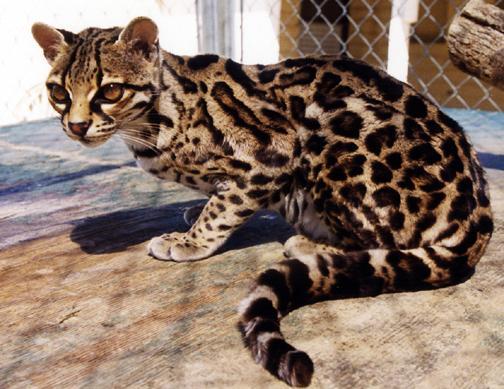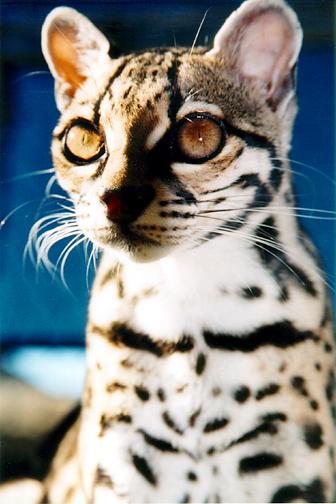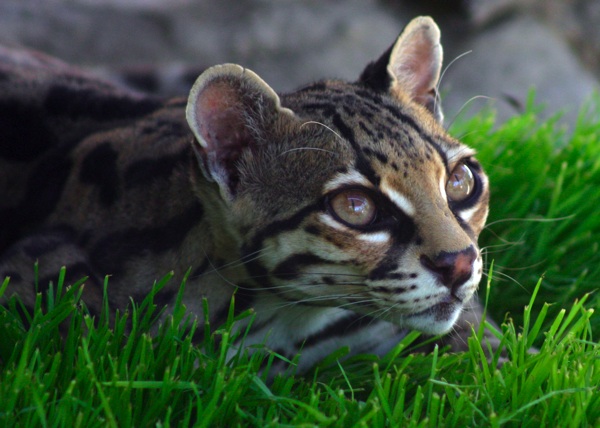
Stamped for your approval
Margay
Leopardus weidii
Leopardus weidii
Physical Characteristics
Size Matters
| The margay is similar to its closest relatives, the oncilla and the ocelot, in many ways, one of which is size. Margay's range in body length from 42-72 cm, an intermediary step between the average length of the oncilla (34-56 cm) and the ocelot ( 70-100cm). The easiest way to distinguish the margay from the oncilla and ocelot, along with the rest of the genus Leopardus, is its exceptionally long tail. The tail has an average span of about 30-49 cm, which is approximately 70% of the cats body length! This feature is unparalleled by any other species in Leopardus and allows for the impeccable balance and acrobatics seen in this master of arboreal life. |
 Photo of Maggie, used with permission, by Nancy Vandermey |
You Can't See Me!
The coat of the margay, in many ways, looks the same as most rainforest cats, with a tawny background having scattered spots, stripes, and patches. These markings are slightly darker than
| the base coat color and are outlined in black, as seen to the right. This pattern covers the entire body of the margay except for its face and underside. The face has the same tawny background as the body, but with two distinct pairs of black stripes. One pair of stripes travel from the outside of each eye, across the temple region, and towards the posterior portion of the body. The second pair move from the inside of each eye and across the forehead in a parallel fashion towards |
 Photo of Julian, used with permission, by Nancy Vandermey |
| the posterior end of the body (see below). The underside of the margay (belly, chest, throat, chin, and the inside of each leg) is snow white with scattered black patches. This makes it almost |
 Photo of Julian, used with permission, by Nancy Vandermey |
impossible
to distinguish the tree dwelling
cat from leaves and branches
shadowing a bright, sunny
background when looking up from
the canopy floor. (see bottom
left of page) Just as owls have frighteningly large, wide eyes to succeed in their nocturnal lifestyle, the margay does as well. Since the margay does the majority of its hunting at night, it must be able to see well enough to navigate through the dense canopy of the forest and capture its prey. Its large, light sensitive eyes allow it to do this to perfection. Another fascinating |
| characteristic of the margay eye is the way its pupil contracts. Unlike the majority of camera-eyed animals whose pupil is circular when dilated or constricted, the margay pupil contracts into a small slit, allowing it to easily control the amount of light passing through its eye. |
 |
 |
 |
Julian (Left) and Maggie (Center) display their white undersides. Notice the small pupil slits seen on Maggie in both her poses in the center and on the right. Photos, used with permission, by Nancy Vandermey
Copyright © 2007, Design by: Sunlight webdesign